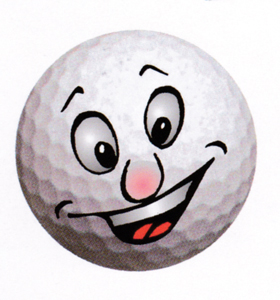The Changing Face of Golf Instruction Part V
 VIDEO AND APPARATUS/ TEACHING AIDS
VIDEO AND APPARATUS/ TEACHING AIDS
Old teaching methods took place on the golf course, as there were no driving ranges, practice putting greens, and learning centers. Slowly, the driving ranges and practice putting greens were added, and under modern standards, it is extremely rare to build a golf course without the range and practice green. Now the practice areas are not simple hitting areas, but extensive and elaborate learning centers.
How much learning is taking place is hard to say. Some students do learn and some do not. If the facilities are there, then why has the handicap of the average golfer remained the same for many years? There are various reasons speculated, but nothing seems to be an accurate or a proven answer.
One of the reasons for this failure of many to improve may be in the teaching and learning. Is it possible that our students are given too much “information overload”? Maybe we have become so detailed and precise that we have taken away the feel of the swing from the student. We say everyone is an individual and has individual characteristics, but we teach them all the same. We even videotape them, superimpose their swing over a model swing, and then have them work on their body moves until they can swing like the model.
Children are taking lessons before they know what a club feels like. They are taught to make the body moves like Tiger Woods, Ernie Els, etc. When we teach to the model, are we teaching golf or are we developing robots? Are our robotic students losing their feel for the swing by trying to adhere to a model?
In order to get their students to swing to a model, many teachers strap them into some kind of apparatus or teaching aid. These types of things may actually make the problem worse. As an example, let’s say we have a flying right elbow problem. We strap the elbow to the body so that is stays close to the body on the backswing. The arm will still want to push out, even against the strap. The strap holds the elbow in, but the muscles are pushing against the strap, even though the elbow cannot move out. This push against the strap creates an isometric muscle contraction as the elbow is pushing against a resistance, and as a result, a stronger flying elbow develops. Take the strap off and the result may be even a greater flying elbow.
Take care using the strap. Use it a few times and then take it off and try to maintain the correct move. Repeat this on-and-off procedure until the correct move is achieved. This procedure and philosophy prevails with most teaching aids. Some feel all these teaching apparatuses or aids are marketing ploys.
Perhaps the biggest overload to the student is the use of the video camera. If properly used, the video can be an asset. Students are analyzed on the video from two, three, and sometimes four angles. Slow motion, stop action, split screen, zoom, and even special effects are used. Is all this really needed? Some swear by it. Some say it is not needed. Some just don’t know. Research is scarce, in fact, almost nil, on this. In time we will know.Perhaps we will have to wait to see if the average handicap is lowered. So far it has not, but we do need more time and research.
Overuse of video can make the student so conscious of each move and detail that they lose feel for the skill. By trying too hard to replicate the model, the student can and often does lose the feel for the skill.
The video shows the errors and then the student must correct the errors. The errors must be corrected by feel. From the video, the student must use the video to develop the picture in their mind. With this picture in the mind, the feel process is worked on. Golf students need more than seeing their mistakes. The student must feel their mistakes and feel their correct responses. Too many times, video is used to only point out mistakes. More time should be used to point out correct responses.
Too long a time frame in watching videotape can be of little value. Ask a person what happened on the TV (not a golf program) after they watched for a period of time. Very often, they can’t remember what they were watching, and if they can remember something, it is often vague with little detail. This phenomenon can occur watching a golf video. The student’s attention span may not be as long as one thinks.
Another aspect of video is to not correct too many errors at once. Some teachers will focus on too many corrections on the swing video. This is information overload. Use the video to correct one error at a time. Pick the correct error and it is possible to correct other errors with this one pick. Do not rush the process. Give the learning time to sink in. Remember, build the foundation with fundamentals, and then make each succeeding level strong for further levels, one step or level at a time.
The goal of teaching is to take the complicated and teach it in a simple and effective manner. This will not be outdated.




